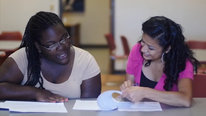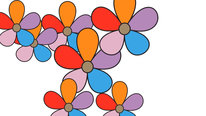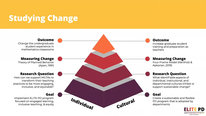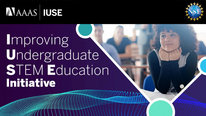- Shandy Hauk
- Associate Professor
- Professional Resources & Inquiry in Mathematics Education (PRIMED) for K-8 Teacher Education
- San Francisco State University
- Billy Jackson
- Assistant Professor, Term
- Professional Resources & Inquiry in Mathematics Education (PRIMED) for K-8 Teacher Education
- University of Louisville
- Jenq Jong Tsay
- Associate Professor
- Professional Resources & Inquiry in Mathematics Education (PRIMED) for K-8 Teacher Education
- University of Texas Rio Grande Valley
Public Discussion
Continue the discussion of this presentation on the Multiplex. Go to Multiplex









Billy Jackson
Assistant Professor, Term
Greetings from Shandy, Jenq Jong, and Billy,
Welcome to our corner of the showcase for Professional Resources and Inquiry into Mathematics Education (PRIMED) for K-8 Teacher Education. The question of interest for us right now is What does justice look like in college mathematics instruction? The video clip is intended as a glimpse of some ways justice and equity in instruction can play out in a college mathematics classroom.
Given the complex and multi-cultural environments for today’s public school teachers, the project sought to understand and support the growth of two things: (a) college instructors’ mathematical knowledge for teaching and (b) their attention to equitable and just aspects of their own instructional practices.
We welcome your contributions to the conversation thread! Now nearing the end of our project, we are particularly interested in feedback on these points:
What is your sense of the skills that college mathematics instructors bring to teaching prospective elementary school teachers in equitable and just ways? What skills do they need to develop in order for their instruction to be equitable and just? Notice, this does not yet ask how to support instructors to teach future teachers about equitable and just teaching of children.
What scaffolds for equitable and just college teaching might be important to highlight in a library of instructional materials? Why those particular scaffolds?
Thank you for your contributions!
Sandra Laursen
thanks for sharing!
To respond to your questions- to me all of the "just" aspects of this lesson are in the facilitation, not in the problem. So to me question 1 (skills) is more pertinent than question 2 (materials) - though certainly the problem, or this presentation of it anyhow, has been presented in a form that has some useful characteristics, e.g. open-endedness. Perhaps one skill is the ability to deconstruct a closed-ended problem to open it up to make it appropriate for group processing of this or other types.
The facilitation skills I see here include use of wait time, engaging multiple people (I need to see at least 4 hands...), semi-cold calling, probing student thinking. The lesson moves along in a snappy way yet insists on some clarity of communication. Watching it, I think I can "feel" what the instructor values here, but I'm not sure I could do so in the classroom, in the moment, if I were not confident of my mathematical responses. So I can also imagine that this approach is a bit scary to students at first.
I'm not sure what you mean by "scaffolds" for equitable and just teaching as a thing that could be "highlighted" in instructional materials - can you unpack this question a bit?
Billy Jackson
Assistant Professor, Term
Hi Sandra--
Yes, our focus is on the moves the instructor makes during the class. It's why we have demarcated teaching math *for* justice as opposed to teaching the math *of* social justice. By scaffolds, we are wandering about what you and others consider important for people who are just beginning to think about what teaching for justice means and how to do it in their own classrooms. As you noted, most people who are trying it for the first time will have many questions and concerns. As such, we are wandering about what can be done in providing supporting materials that accompany the tasks themselves that could provide guidance for the instructors before they implement the lesson itself. The ultimate goal is to eventually have a central repository of tasks with accompanying instructional supports to give people who are new to such ideas and the tasks themselves sufficient guidance so that they are likely to have some success at implementing the tasks in just and equitable ways. So our central question is what do you think such supports should include and why those particular things?
Laura Larkin
Albert Einstein Distinguished Educator Fellow
Hi Billy and team-
The classroom experience was lively and engaging for many students and had them up and moving around. I am wondering if there might be a more pertinent prompt. Many students have not experienced summer camp and I'm not sure how many have pulled on a flagpole rope to have the insight for the subtleties in rope slack that the participants were discussing. I know this was just a short snippet but I'm wondering how to be sure all students are participating in the thinking.
Billy Jackson
Assistant Professor, Term
Hi Laura--
So you can go the site below where this same activity is done in an 8th grade classroom:
https://sfsu.box.com/v/primed-K-8-stem-for-all-2021
It is an interesting experience to listen to the many different children participating in the discussion, and each of them seems to contribute something different in understanding the graphs.
Your thoughts on responsiveness hearken back to something Shandy asked me about the other day interestingly enough. She asked what this lesson would look like and what things would have to be different if you were teaching a blind person. It got me thinking about what we really mean by "justice" and "responsiveness", as certainly such terms will depend on the specific groups of learners that we are talking about. Your comments remind us all that responsiveness is a very worthwhile yet challenging goal. It takes continuous planning and thinking ahead to be responsive, and so we are hoping to be able to help faculty who are novices in working with future teachers learn how to be responsive to their teachers with as much support as possible.
Your remarks are also point to another important point that I believe both K-12 and undergraduate math education researchers and practitioners have to start stressing -- that there is a difference between teaching math *for* justice and the math *of* social justice. Indeed, one can teach the math of social justice in the most unjust of ways. I personally find that social justice topics are often used as proxies for responsiveness when in fact they may not be responsive at all due to the fact that many of the students may lack their own personal experiences with the subject matter as you have pointed out.
April Luehmann
Wait!! I want to see what happens next!!
Jonee Wilson
Billy Jackson
Assistant Professor, Term
Hi April--
You can actually see what happened afterward in the extended version of the video at the address below:
https://sfsu.box.com/v/primed-K-8-stem-for-all-2021
Bridina Lemmer
Technical Assistance Consultant
Thank you so much for sharing your work team! I heard a lot of "Talk moves" in here and it got me thinking about how often those similar strategies are used in science classes to engage all students in learning and address inequities in science education... was that intentional here? I'm curious to hear how those strategies are received by both teachers and students alike. Are you seeing more active engagement from your preservice teachers and do you know yet if they are planning to incorporate them into their own classroom experiences?
Very exciting!
Shandy Hauk
Associate Professor
Yes, part of the reason we selected the video was this college instructor's use of talk moves that have been well-known in K-12 education for a while. The college math instructor participants in last year's PRIMED short-course shared the challenges they and their students had in being in a college environment (where the norm is instructor-centered and instructor-filtered knowledge sharing). Their reports suggest that one next step for the course may be offering a list of moves with indications of the relative strength of dissonance one might generate by using them and the investment needed to be explicit and prepare students for the new norms one is attempting to establish. Unlike many K-12 settings, the variety in professional environments and job security in post-secondary settings means many instructors who teach math for future elementary school teachers are more vulnerable to challenge (or even non-re-hire) when experimenting with instructional moves. That's why we are seeking ways to scaffold experimentation that are accessible and can be taken up by people, including contingently employed faculty (e.g., hired semester to semester) at community colleges and universities as well as tenured/tenure-track and other full-time folk.
Helen Burn
Hi Shandy, Very interesting approach particularly because you are considering the vulnerability of college math faculty in NTT positions as they try experimental approaches. I like that you put that out there as an organizational reality.
Billy Jackson
Assistant Professor, Term
Hi Helen--
Well it helps to remind ourselves of that since I'm NTT faculty. However, it's also important because according to recent studies done by Masingila, Olanoff, and others, the NTT faculty make up a significant proportion of the population teaching the courses for future elementary teachers. We have also seen anecdotal evidence of the (possibly positive and negative) impacts that teaching the courses can have on 2 year institutional faculty as a result of working on the project.
Billy
David Barnes
Associate Executive Director, NCTM
Thanks Sandy!
I find watching classroom videos very compelling and also interesting as to what different individuals attend to. You frame the video to have elements of “ways justice and equity in instruction can play out” in a classroom.
Would you be able to point out a couple of techniques, not already named, which you see as representing the teacher moves that accomplish this goal?
Shandy Hauk
Associate Professor
Hi David,
If I understand correctly, your post asks for techniques used by the instructor in the video that represent accomplishing the goals of justice and equity in instruction. For me that involves answering two questions: one about what I think justice and equity look like and one about how the video shows an instructor "accomplishing" that. On the first question, my take is a combination: "Justice is what love looks like in public" (Cornell West) and equity is a verb (not a noun), it is what one approximates, in a kind of calculus of accumulating moments with (and among) people, curricula, and policies, in the pursuit of liberation.
The professional work of the instructor in the video clip and extended video include many things that current research might identify as "equitable": group activity based in a group-worthy task that can leverage variety in student experience, the instructor modeling and explicitly naming efforts to elicit and celebrate diversity in thinking, opportunities for students to both choose a role and practice a particular (assigned) role in group or whole-class interaction, classroom seating arrangements in which students face each other, shared representations (prior to the clip, students worked at boards around the room and the group productions are visible in the background).
Now, given the door opened by your inquiry, I will elaborate a bit with some of the recent work Natasha Speer and I have been doing. A technique is a way of carrying out a task, it is a method or procedure. As was noted more than 20 years ago by Franke and colleagues (1998),
Self-sustaining, generative change does not involve acquiring a set of procedures to implement with fidelity; rather it frequently entails teachers making changes in their basic epistemological perspectives, their knowledge of what it means to learn, as well as their conceptions of classroom practice. It means conceptualizing teacher change in terms of teachers becoming ongoing learners (p. 67).
Successful implementations of the kinds of instructional practices described as equitable call for teaching that elicits and utilizes student contributions. For novice instructors beginning their careers as college teachers, the expectation is that they facilitate discussions to which students contribute their thinking and voices. This kind of instructional decentering is, at its most basic, the act of seeing from someone else’s point of view and has historical roots in the work of Piaget (1955). It means engaging with other people as a participant in interaction. A participant with power. That means learning to invite and orchestrate yet not dominate interaction.
In decentering, instructional attention is on uncovering, understanding, and expanding on what students know and do to include novel, non-standard, and standard mathematical ideas and methods (Carlson et al., 2007; Rahman, 2018; Teuscher et al., 2016). Being self-aware and facilitating self-aware learning by students are the focus (instead of attention and authority being vested largely or solely in the instructor).
Decentering requires attention to other people as (potentially) different from oneself, noticing nuances in similarity and difference between one’s own perspectives or experiences and those of others. In its most developed forms, instruction that leverages decentering also bridges across similarities and differences in formulating in-the-moment responses to situations.
Decentering depends on a variety of individual instructor factors (e.g., self-knowledge, goals, orientations, beliefs, psycho-social challenges). Professional development can provide opportunities for instructors to build skill in decentering, along with other facets of cross- or intercultural competence. There is a developmental continuum for decentering: from an ethno-centric view that everyone is like me to an ethno-relative view, that any person (including me) is like and unlike every other person in identifiable and valuable ways (Bennett, 2004).
In particular, learners in instructor-decentered instruction are (and are encouraged to see themselves as) decision-makers in the classroom. Novice instructors need to learn how to initiate, sustain, and manage undergraduates as participants in student-centered learning. This includes instructors learning about many things from a student-centered perspective, such as content, curriculum, and assessment (Bok, 2009), communication and interaction (e.g., related to classroom authority or socio-political factors, Gutiérrez, 2009, 2013; Winter & Yackel, 2000), as well as how to learn in and from instruction itself (Speer & Hald, 2008). Learning to elicit student thinking and learning how to shape instruction based on that thinking is the foundation on which generative change is built (Franke et al., 1998).
David Barnes
Associate Executive Director, NCTM
Thanks Shandy for the wonderful and thoughtful response. I think you are spot on that "individual instructor factors" are a significant component of the change along with a healthy does of reflection and meta-cognitive work. Very helpful in thinking about the your work and the lesson.
Jonee Wilson
Like April, I wanted to know what happened next as well :) BUT I'm equally interested in learning what some of the responses to the prompt for "Part 3" were...what types of endings are typically predicted?
Shandy Hauk
Associate Professor
Hi Jonee,
Though we did not use this new activity in the last offer of the short-course, we have piloted it with a dozen novice college math instructors. Generally there are two types of answers. Either respondents have a script in which the instructor elicits one or two more student responses that are also metaphorical (rather than using standard mathematical discourse) or there is a student who responds "correctly" with standard mathematical discourse. In all cases, novice instructors who have engaged with this task so far have framed it in terms of whether the students "do what he [the instructor] wants" and include the aim that the "correct answer" is spoken by the instructor. None have predicted what actually happened, and few have included moving on from graph F and seeking (as the instructor foreshadowed) alternative arguments in favor of the other graphs.
We think the main value in the activity is raising awareness of alternatives -- ways in which classroom power can be managed as a conductor of an incredibly talented orchestra (rather than as a soloist -- to get metaphorical :). For so many novice college instructors, how to attempt equitable instruction is mythical -- it has never been witnessed. The activity allows a glimpse of one attempt at it. Other activities in the short-course (some also with video clips) illustrate other attempts.
Megan Davis
Thank you for sharing the Dropbox with the lesson plan, the student worksheet, and the video clips. This is a teacher pd session ready to go!